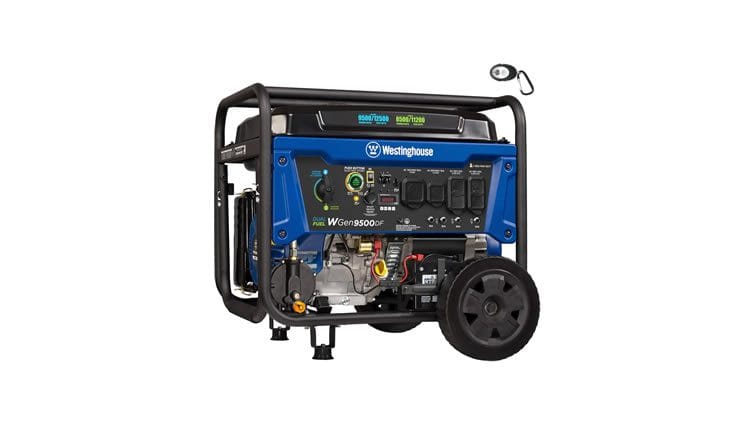Power Generator Overview
Power generator solutions have become essential for many homeowners and businesses, offering peace of mind during power outages and emergencies. These devices ensure that you have a reliable source of energy when the grid fails, keeping your lights on, your appliances running, and essential systems powered. With technology advancing quickly, power generators are now more efficient, quieter, and easier to operate, making them a smart addition for anyone looking to stay prepared.
In recent years, the need for dependable backup power has grown, and power generators have evolved to meet diverse demands. From small portable models to large standby units, there’s a generator suited for every need and budget. Understanding how these devices work, the options available, and what’s best for your setup can help you make an informed decision and ensure your home or business is ready for any situation.
Fueling Up and Testing Your Generator
Keeping your power generator fueled and ready before a storm hits is a must to ensure everything works when you need it most. Storms can be unpredictable, and with them often comes the potential for power outages. Having your generator fueled, tested, and ready to go provides peace of mind and ensures you can handle whatever the weather throws at you. A few simple steps can make all the difference between smooth sailing and stressful scrambling.
Choose the Right Fuel Type and Check Supply
When it comes to fueling, each power generator is different, and it’s essential to know which fuel type yours requires. Some generators run on gasoline, while others use diesel, propane, or natural gas. Each fuel type has unique benefits and storage requirements, so double-check your manual to ensure you’re using the correct one. Stocking up on fuel before the storm season kicks in will save you from last-minute trips to the gas station, where supplies can sometimes run low.
Ensure your fuel supply is fresh, as stale fuel can cause problems when you start your generator. Gasoline, in particular, can go bad if it sits too long, so adding a fuel stabilizer can help it last longer. Propane and natural gas are easier to store over time, making them great options if you want a long-lasting fuel source. Take a few minutes to check your fuel level and add more if needed, so you know you’re ready to go.
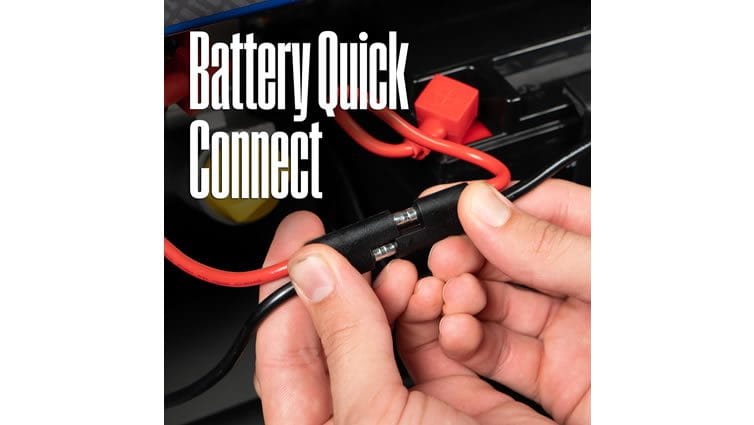
Inspect Fuel Lines and Connections
Once you’ve got your fuel sorted, it’s time to inspect the fuel lines and connections on your power generator. Over time, hoses can become brittle, cracked, or clogged, and these issues can interfere with how well your generator functions. Carefully look over the fuel lines and check for any wear or leaks. Leaks are not only dangerous but can also prevent your generator from running efficiently when it’s needed.
If you spot any issues, don’t ignore them. Fixing leaks or cracks before a storm hits will give you confidence in your generator’s performance. If you’re unsure about handling repairs, a quick call to a professional can save you from bigger problems down the line. A little maintenance goes a long way in keeping your generator in tip-top shape.
Test Your Generator Regularly
Testing your power generator is just as important as fueling it up. It’s one thing to have a generator ready, but if it hasn’t been tested recently, there’s no guarantee it will work as expected. Set aside time each month to start up your generator and let it run for about 15–20 minutes. This helps ensure the engine stays lubricated and everything runs smoothly.
During testing, pay attention to any odd sounds, smells, or anything that doesn’t seem right. A well-maintained generator should start easily and run smoothly. If it’s hard to start or sputters, you may need to clean or replace parts, like the spark plug or air filter. Taking note of any issues while testing allows you to fix them well before an actual emergency.
Check the Battery and Oil Levels
While testing, it’s also a good time to check the battery and oil levels. The battery powers the starter, so if it’s weak or dead, you’ll have trouble getting the generator going. Batteries lose charge over time, so make sure it’s fully charged and replace it if necessary. Many generators come with a battery indicator, which makes it easy to monitor the charge level.
Oil is essential for keeping the engine running smoothly and preventing overheating. Check the oil level and top it off if needed. If the oil looks dark or dirty, consider doing a full oil change to keep everything running efficiently. Staying on top of these small maintenance tasks means your power generator will be ready to run safely and effectively.
Clear the Area Around Your Generator
Having a clear space around your power generator is essential for safety and efficiency. Make sure the area is free from any clutter, debris, or flammable materials. Generators need proper ventilation to avoid overheating, so keeping a few feet of space on all sides allows it to function without risk of fire or damage. A clear area also makes it easier for you to refuel and access your generator quickly.
Before each storm season, take a few minutes to set up a dedicated spot for your generator. A cleared area also reduces the chances of tripping over cables, hoses, or other obstacles if you’re refueling in a hurry. This extra step keeps your generator accessible and safe, so you can focus on what matters most.
Store Fuel Safely and Smartly
Proper fuel storage is just as important as fueling up your power generator itself. Make sure you’re using approved, airtight containers for storage, and label them clearly so you know exactly what’s inside. Store fuel in a cool, dry place, away from any heat sources or flammable materials. A dedicated fuel storage area, such as a shed or garage, helps you keep everything organized and easy to access.
When storing fuel, think about how much you actually need. A few gallons of gasoline might be enough for shorter outages, while larger fuel supplies may be necessary if you expect longer power disruptions. Keeping fuel on hand gives you one less thing to worry about when a storm is approaching, and you’ll be ready to go at a moment’s notice.
Practice Starting and Stopping Your Generator
Knowing how to start and stop your power generator is essential in an emergency. Practice the process so that you’re familiar with each step, from fueling to turning the generator on and off. Understanding your generator’s controls will save you time and reduce stress during a real power outage.
Take time to read the manual and follow the recommended startup and shutdown procedures. Different models may have specific instructions, so it’s worth the effort to learn them ahead of time. By practicing these steps, you’ll be confident in your ability to handle your generator safely, ensuring you’re ready to power through any storm.
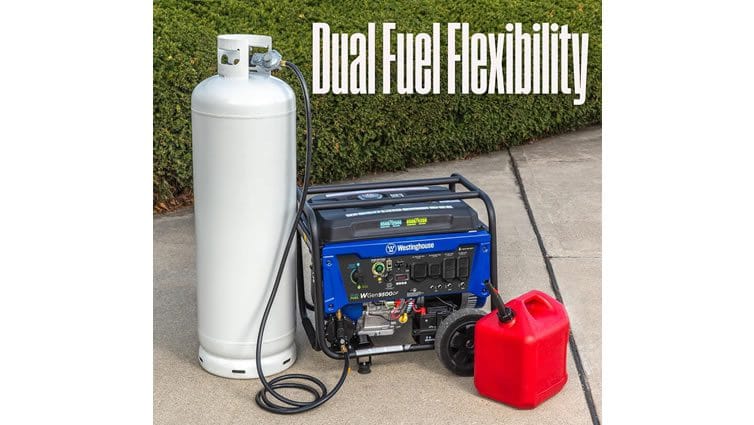
Stay Prepared and Ready for Storms
Fueling up and testing your power generator ahead of storm season means you’re always ready to face unexpected power outages. Preparing in advance keeps you from scrambling at the last minute and ensures your home stays powered, safe, and comfortable. Taking these simple steps brings peace of mind, knowing your generator is reliable and prepared. After all, a little preparation now can save you a lot of hassle later, keeping you and your home safe during any storm.
Checking Cords and Connections
Ensuring that your power generator is ready for action involves more than just fueling it up. One often-overlooked area is checking the cords and connections, which are critical to delivering reliable power when you need it most. A few simple steps to inspect and maintain your cords can make all the difference in keeping your generator and appliances running smoothly during an outage.
Inspecting for Frays, Cuts, and Damage
Over time, cords and cables can wear out, especially if they’re stored or handled frequently. Before you start your power generator, take a close look at each cord for any visible signs of fraying, cuts, or other damage. Even small nicks or cracks in a cord can lead to dangerous situations, like sparks or power failure, so it’s better to catch these issues early. If you find any damage, consider replacing the cord instead of patching it, as even a small weak spot can compromise safety.
For extra peace of mind, invest in heavy-duty or weather-resistant cords, especially if you’re using your power generator outdoors or in damp conditions. These types of cords are designed to handle a bit more wear and tear, making them a safer choice in tough conditions. A quick once-over on your cords can go a long way in preventing problems down the road.
Ensuring Tight and Secure Connections
Loose connections are a common issue with power generators, and they can cause interruptions or even damage your appliances. When setting up, make sure all connections between your generator and cords are snug and secure. Wiggle each plug slightly to confirm there’s no movement or play, which could lead to intermittent power loss. A tight connection means your generator will deliver a consistent flow of power without risking overheating or short-circuiting.
If you’re using multiple cords, be cautious about using power strips or adapters, as these can sometimes create loose connections. Stick with direct plug-ins whenever possible, and if you must use an extension, make sure it’s rated for your generator’s power output. A solid, direct connection helps your power generator work efficiently and reduces any potential risks.
Choosing the Right Cords for Your Generator
Not all cords are created equal, and using the wrong type can limit your power generator’s efficiency or even damage it. For instance, using a standard household extension cord with your generator isn’t ideal, especially if it’s not designed to handle heavy electrical loads. Instead, choose cords specifically rated for outdoor or generator use, as they can handle higher wattages and are typically more durable.
When selecting cords, check the gauge rating, which refers to the thickness of the wire inside. Lower gauge numbers mean thicker wires and better capacity to carry power over longer distances. For most home power generators, a 10 or 12-gauge cord should be sufficient, but if you’re powering multiple devices, you may need a lower gauge for optimal performance. Having the right cords means you get the most out of your generator without unnecessary strain.
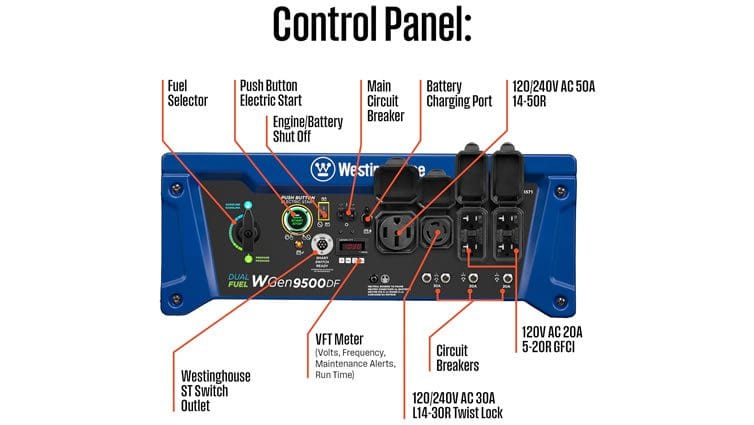
Testing Connections Before an Emergency
Testing your cords and connections ahead of time can save you from scrambling during an actual power outage. With your generator off, connect each cord to your essential devices and appliances to ensure they’re compatible and working as expected. Pay attention to how the cords handle the load, and check that no circuit breakers trip in the process. This pre-testing ensures that your power generator is ready to handle your needs when it matters.
Taking time to test your setup means fewer surprises when the lights go out. By understanding which cords work best with each appliance, you can arrange a reliable configuration that delivers consistent power during outages. A quick trial run can confirm that everything is connected correctly and ready for action.
Organizing and Storing Cords Properly
Proper storage of cords and cables can prevent unnecessary damage and make setup faster in an emergency. Avoid tangling or folding cords too tightly, as this can lead to creasing or weakening over time. Instead, coil cords loosely and store them in a cool, dry place to maintain their integrity. Some generator owners find it helpful to label cords for specific appliances, making it easy to grab the right one quickly.
If you store your cords near your power generator, make sure they’re kept off the ground to avoid moisture or dirt. This habit keeps them clean and ready for use, so you don’t have to worry about untangling a mess of cables when you’re in a rush. Organized cords mean less stress and a quicker setup process.
Using Safety Covers and Surge Protectors
Protecting your cords from environmental factors is essential, especially if you’re running your generator outside. Consider using safety covers on outdoor connections to prevent water or debris from getting into the plugs. Additionally, using surge protectors can help guard against any sudden voltage spikes, which can damage your devices or your generator.
For extra protection, especially if you live in an area prone to rain, you might look into weatherproof connector covers. These covers can shield the connection point between cords and generator plugs, ensuring that even if it rains, your setup remains dry. Protecting cords with these covers adds an extra layer of safety to your power generator setup.
Staying Prepared for the Unexpected
Checking cords and connections might seem like a small detail, but it’s an essential step in ensuring that your power generator is ready when you need it most. Regular inspections, testing, and proper storage all contribute to a smoother experience during outages, so you can rest easy knowing everything is set up right. With just a little attention to these details, you’ll have confidence in your generator’s performance, no matter what comes your way.
Keeping your power generator in top shape isn’t just about fuel and maintenance – it’s also about the small things, like reliable cords and secure connections. So, take a few minutes to check everything over and get yourself ready for any situation. When the next storm hits, you’ll know that your generator and cords are prepped, safe, and ready to go, helping you power through with ease.
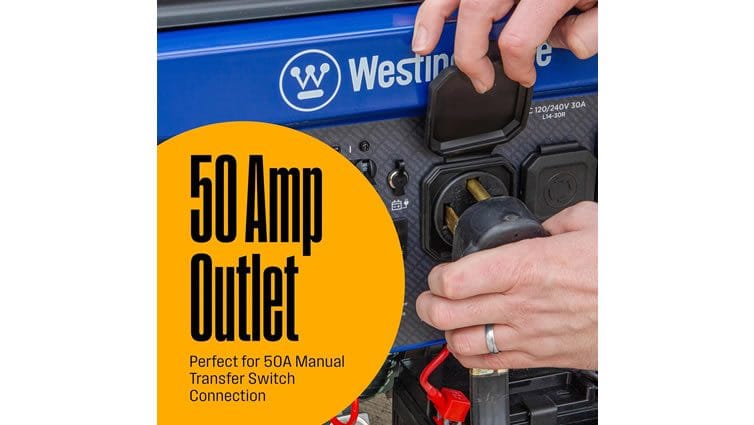
Preparing Your Home for Emergency Power
Getting your home ready for emergency power can make all the difference when an outage strikes. A bit of planning and preparation ensures that your power generator runs smoothly and powers the essential parts of your home without a hitch. Let’s dive into how you can make sure everything is set up and ready so you’ll be confident and comfortable, even in a blackout.
Decide What Needs Power the Most
The first step is to figure out which parts of your home need power during an outage. Not every device or appliance in your home needs to be powered in an emergency, so it’s smart to prioritize. For many, essentials include the refrigerator, lights, and any medical equipment. Consider adding your heating or cooling system if you’re in an area with extreme weather.
Take some time to walk around your home and make a list of the essentials you want your power generator to cover. This list will help you determine the generator size you need and streamline the setup. Plus, by identifying your essentials ahead of time, you can avoid unnecessary stress when the power goes out.
Create a Dedicated Space for Your Generator
Setting up a dedicated spot for your power generator can save you time and trouble when you need it. Generators should be kept outside, away from windows and doors, to avoid any risks from exhaust fumes. If you’re using a portable generator, consider setting up a stable, weather-protected area where you can easily connect it to your home.
Choose a spot that’s easy to access but safely away from living areas. You want somewhere that keeps the generator dry, well-ventilated, and easy to refuel if needed. By planning this location now, you won’t be scrambling to find a safe spot during a storm or outage. Having a designated space means you can get things up and running quickly and safely.
Check Your Home’s Electrical System Compatibility
Before hooking up a power generator, it’s essential to know if your home’s electrical system is ready for it. Many homes benefit from a transfer switch, which allows you to safely connect your generator to your home’s circuit without worrying about power backfeeding into the grid. A transfer switch is a game-changer because it simplifies switching between grid power and generator power.
If you’re unsure about your home’s setup, consulting an electrician is a wise choice. A pro can install the right connections, making sure everything is up to code and safe to use. This step not only makes operating the generator easier but also protects your home and anyone working on nearby power lines from potential hazards.
Stock Up on Necessary Supplies
Beyond setting up the power generator, having the right supplies on hand can keep things running smoothly. Stocking up on extra fuel, oil, and extension cords can make a big difference. You don’t want to find yourself out of fuel in the middle of a power outage or realize that your only extension cord doesn’t reach.
Make a checklist of essential supplies for your generator and keep them in a convenient spot. Add items like fuel stabilizer, spare air filters, and even a flashlight or two near your setup. Having these items close to your generator keeps you prepared and ready to handle minor issues or refuel as needed without any hassle.
Make Sure Ventilation Is Clear
Proper ventilation is critical for safe generator use. Generators emit carbon monoxide, which can be deadly if it builds up indoors. Always keep your power generator outside in a well-ventilated area. If your generator setup is outside but close to your home, make sure windows and doors in that area are closed to keep fumes from drifting inside.
A small canopy or generator tent can help protect it from rain while keeping air circulating. Some people even opt for permanent, vented enclosures designed specifically for generator use. The key is to ensure air flows freely so that fumes don’t become trapped. This setup protects both you and your generator, keeping everyone safe during operation.
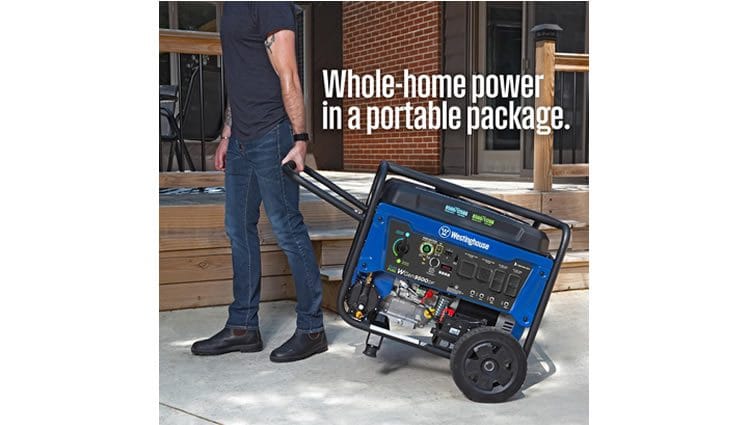
Test Everything Before You Need It
A little testing ahead of time goes a long way in making sure your setup is ready to go. Power up your generator periodically and connect the essentials to make sure everything works as expected. This practice ensures you won’t have any unwelcome surprises when the power actually goes out.
Testing is also a great way to learn how your generator handles different appliances and devices. Try powering each item on your list of essentials, and monitor how your generator responds. If any appliances seem to strain the generator, consider running them separately or adjusting your priority list. These trial runs help you feel confident that your setup will perform as needed.
Keep an Emergency Plan Handy
Having an emergency power plan is the final step in your preparation. Outline each step you’ll need to take, from moving your generator into place to connecting appliances, refueling, and turning it off safely. A clear plan helps everyone in your household know what to do, especially if you’re away or need help setting things up.
Include safety tips, such as waiting until the generator cools before refueling and only using approved fuel containers. By having these steps written down and accessible, you’ll reduce stress and confusion when it’s time to use your power generator. A little planning can make all the difference when an outage hits unexpectedly.
Store Important Documents and Contact Numbers
Along with your power generator preparations, it’s helpful to keep important documents and contact information nearby. If you experience an extended power outage, having access to local emergency numbers, utility contacts, and your generator’s manual can be invaluable. A few minutes of planning now makes it easy to respond to any situation quickly and effectively.
By organizing these items in a waterproof, accessible spot, you’ll have peace of mind knowing you can reach out for help or troubleshoot as needed. It’s a small step that can make a big difference, especially during stressful situations. With everything in one place, you’re better prepared for anything the outage throws at you.
Enjoy Peace of Mind with a Ready Home
Taking the time to prepare your home for emergency power not only makes outages less stressful but also helps you maintain comfort and security. When your power generator and supplies are ready, and you’ve thought through your essentials, you can rest easy knowing you’re prepared. Setting up a power-ready home gives you the peace of mind to handle any power disruption confidently, no matter what comes your way.


